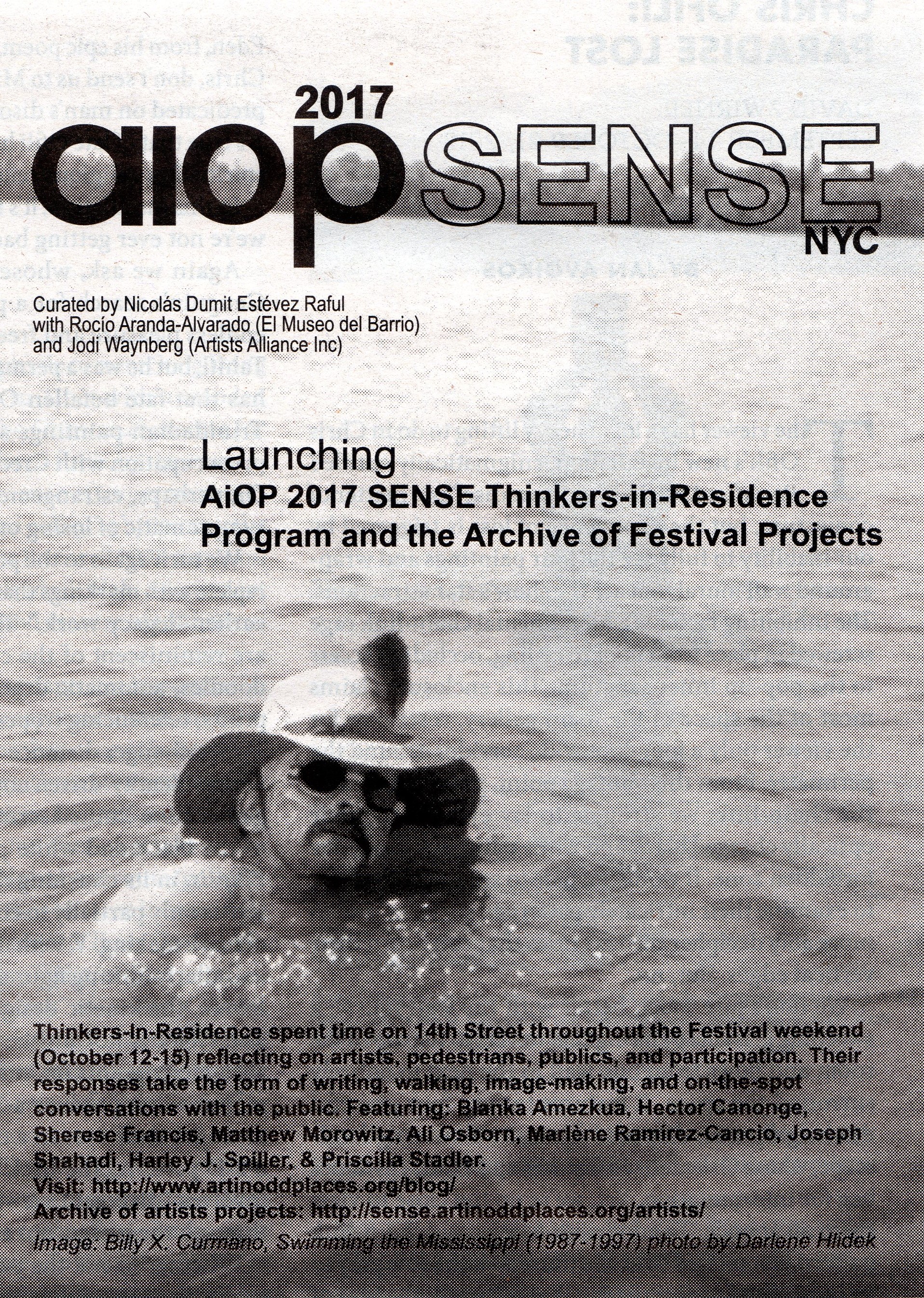
Joseph Shahadi’s Union Square
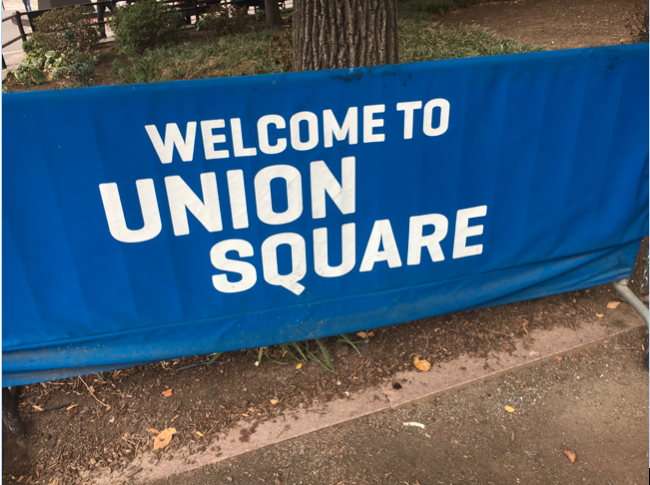
Union Square is a crossroads.
Sitting at a key point on 14th street it seems to knit together the rougher art and cultural history of downtown with the slicker, more commercial stretch to the west. Strolling tourists, rushing New Yorkers, and the homeless trying to catch the attention of both, congregate in and around a square populated with tables overflowing with used books, crates full of puppies and kittens at adopt-a-pet events, acts of public protest, the farmers market, religious groups and, of course, art and artists. The effect is carnivalesque and at first glance it can be hard to tell who is who.
So much of being a New Yorker is about shutting out the images and noise all competing for prominence… the exact opposite task of the tourist, who is trying to drink it all in at once. Sharing space with people whose goals are the exact opposite of yours is a condition of living in an international city.
The value of Art in Odd Places is that it in the midst of that swirl of color and noise it creates moments of interaction through art. It interrupts the roving, scanning eye that moves through the city and changes the landscape—sometimes literally and sometimes metaphorically.
This was readily apparent in pieces like ART&COM’S Collective Bargaining and Matt Bua’s Stone Wall Gnosis Issue Spot.

Collective Bargaining

Collective Bargaining

Collective Bargaining

Stone Wall Issue Gnosis Spot

Stone Wall Issue Gnosis Spot
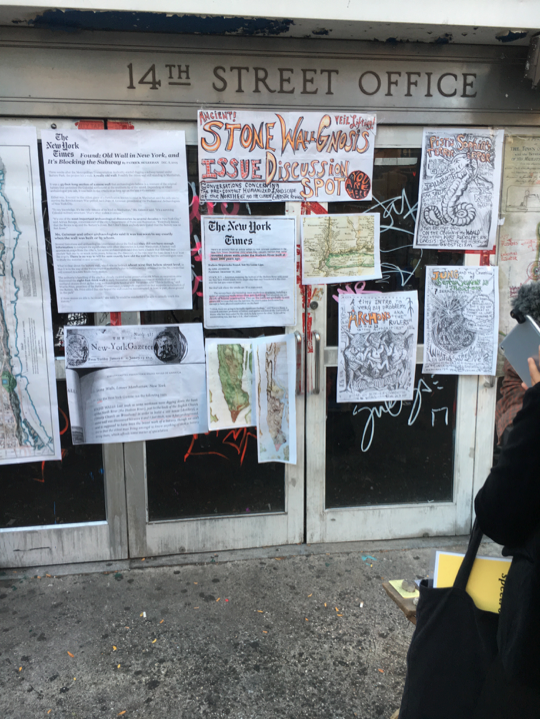
Stone Wall Issue Gnosis Spot
These pieces both modeled a different sort of crossroads by mapping a temporary space for human interaction onto the city. Mobile, interactive and animated by engagement with their audiences, both works created communities by making temporary spaces for sharing ideas. Although the substance of the ideas under discussion was very different in either case, I was struck by how frankly happy both their audiences were. It was a fascinating contrast to the tense anger that marks the virtual “town halls” of every online space at the moment. I immediately saw that both works had tapped into a genuine, unexpressed need to participate in a discussion of ideas that isn’t characterized by hostility. I don’t know what I expected from works like these but the happiness apparent in these photos surprised me.
I returned to AiOP several times over the course of four days and I saw several religious groups performing in public in parallel. On Thursday the 12th I saw large groups of Hassidic men marching and singing through Union Square before letting themselves into the Chabad Loft, created for Sukkah, under the protection of several police officers.
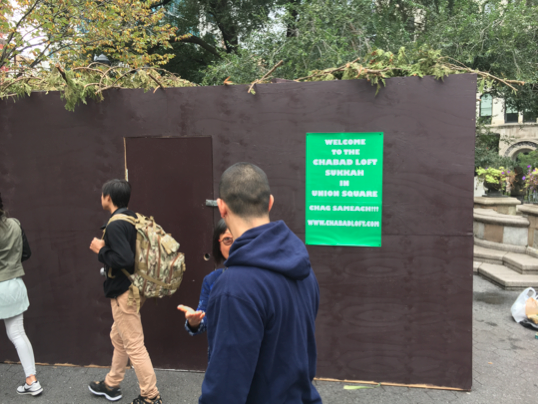
A Christian group gathered in Union Square on Saturday the 14th beneath large banners of Jesus and the Virgin Mary. They asked the people observing to join them in praying for peace. A few did but mostly people just took pictures.

Across the Square a group of Hare Krishnas had claimed a space to advocate for their own take on spiritual knowledge and enlightenment. They passed out tracts, chanted and sang as well.
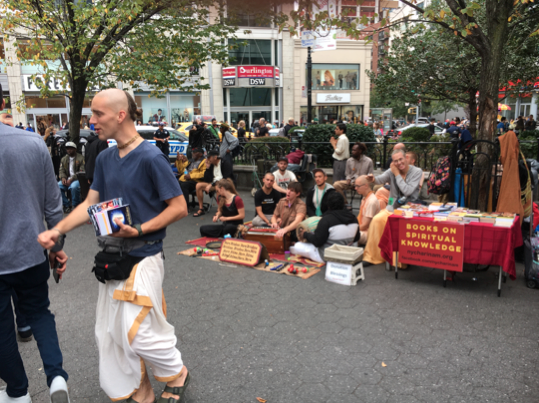
A group protesting the genocide of the Rohingya centered themselves in the Square while a Jewish group protesting the occupation of Palestine stood at the margin. It all made me consider whose religious expressions are assumed to be peaceful and benign and whose represent threat. In a country where a separation of church and state is a founding value, public expressions of religious piety are still common—but not uncontested.
It was against this backdrop that I experienced Laia Solé and Thelma García’s Ruidero. Described as a “collective walk” for me it evoked a procession in any number of religious traditions. This procession, lit by lanterns, was lovely and solemn— the white clothes the participants wore seemed to glow in the dusk—but it also seemed like a witty parody because it used the trappings of a religious expression without a central image or ideological focus. I watched them gather themselves, setting up before resolving into an organized procession on west 14th. This is the moment that struck me, just before the procession started when they were shifting around to get into place. Of all the art I saw during AiOP, this left me feeling the most unresolved—and I think it’s because it made the divisions between private belief and acceptable public expressions of faith so visible.
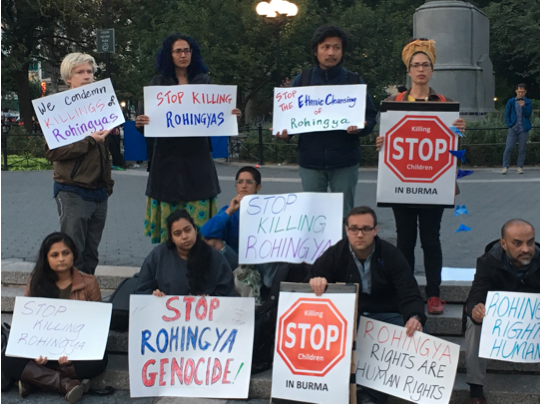

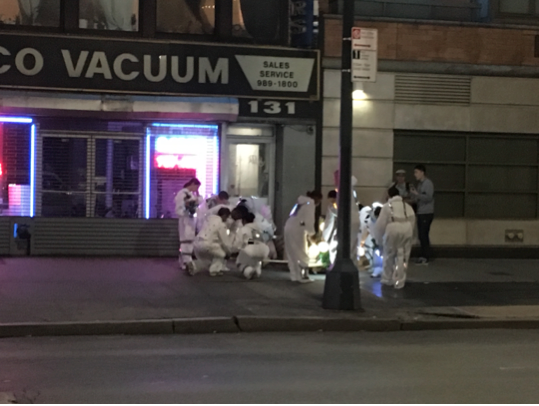
Ruidero

